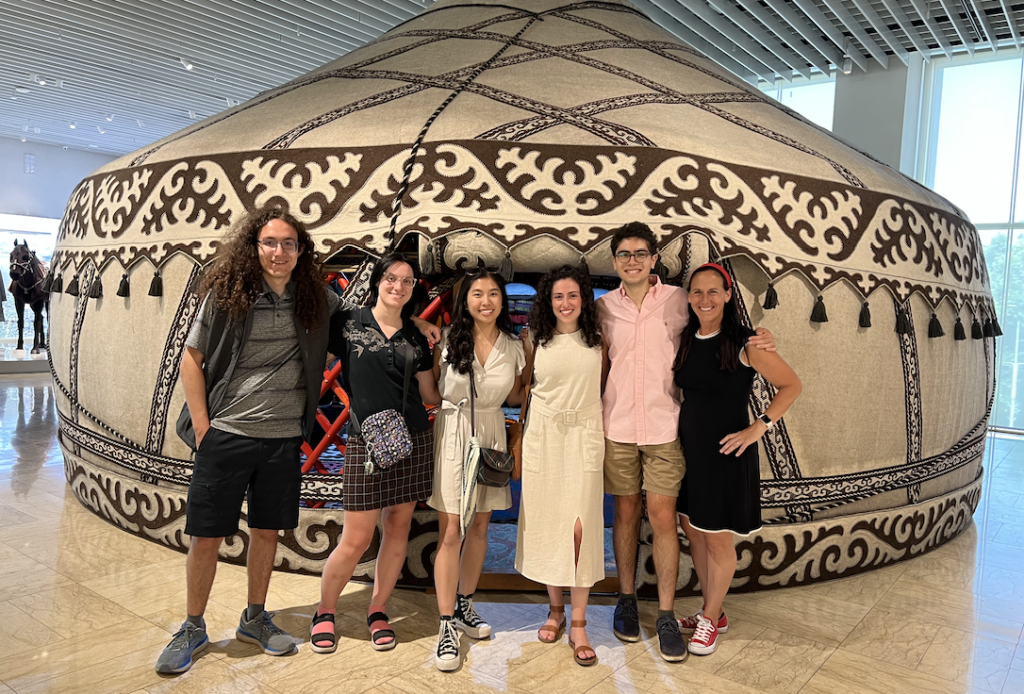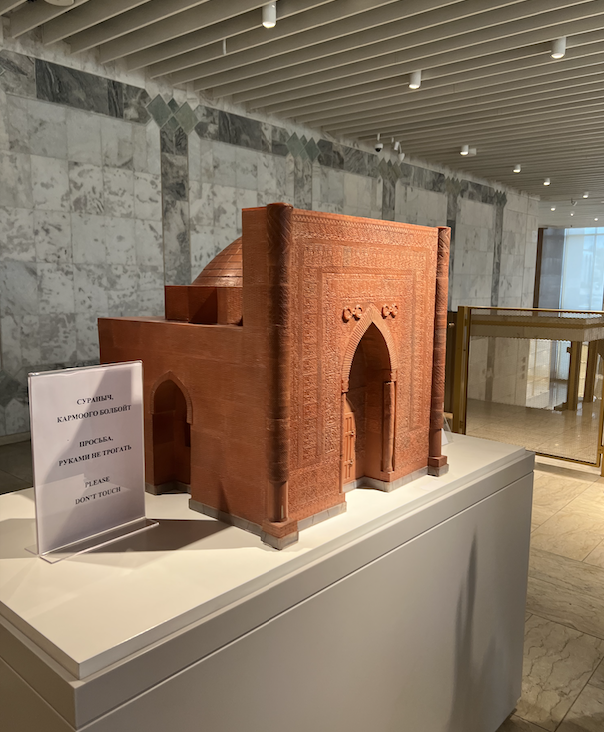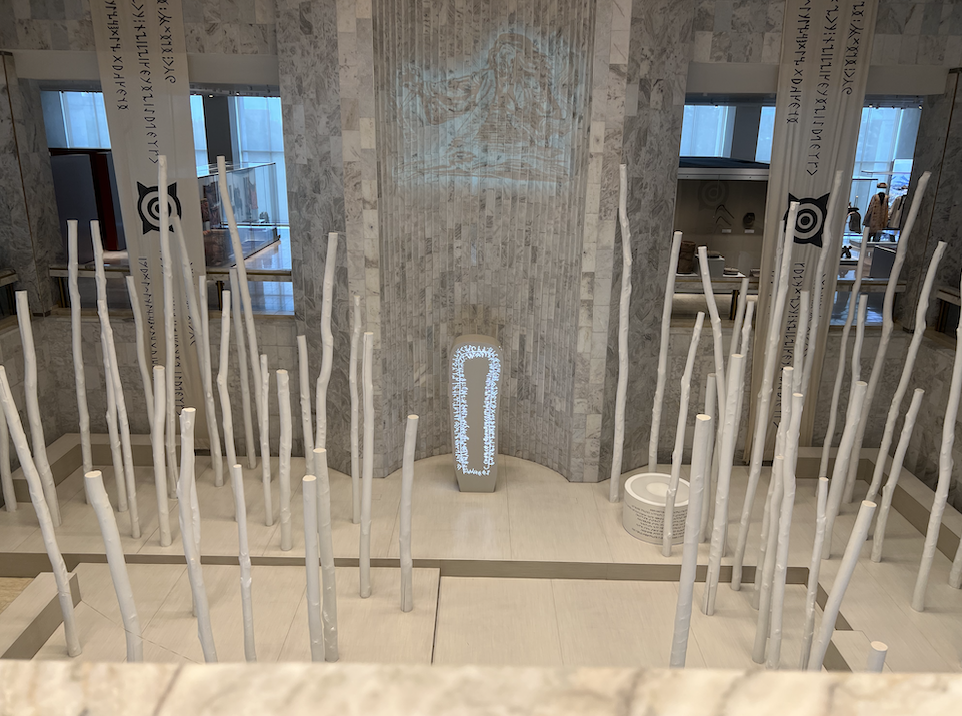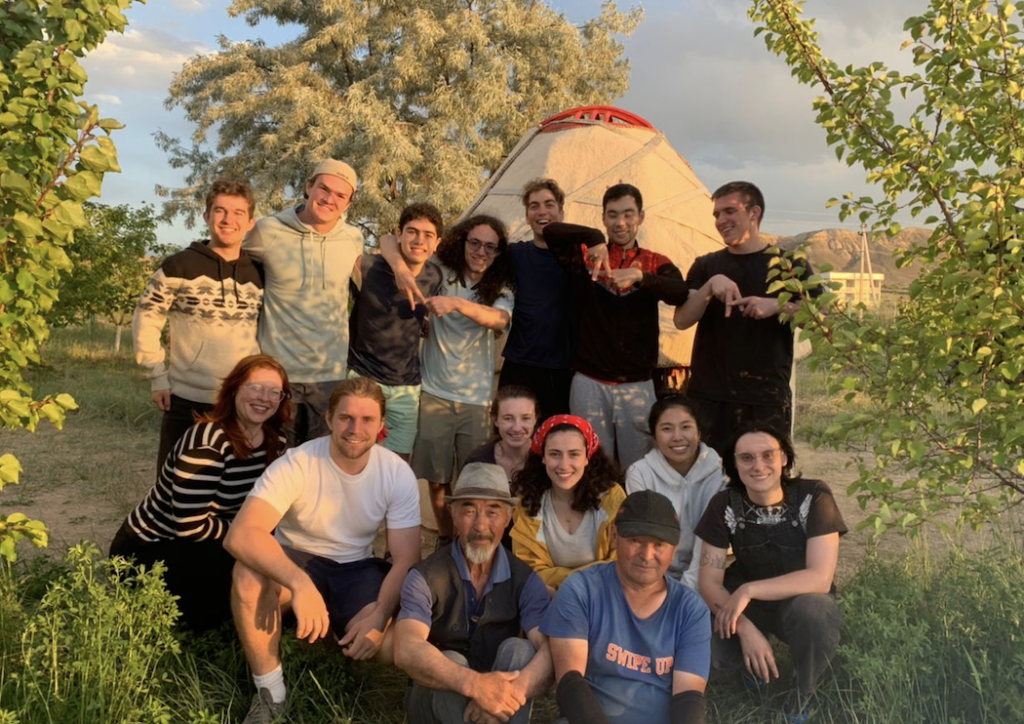Yurt building holds historical and cultural significance to the Kyrgyz people. My class visited the national museum after school then during a trip to Issyk Kul, an alpine lake located on the Tien Shan mountain ranges, we got to build one with local experts.

At the museum, we learned that it was an important custom to decorate yurts with lush velvet and felt rugs. It was amazing how huge the Yurt felt when inside. The rich colors and patterns of all the rugs seemed to stand out even more. Yurts allowed the historically nomadic tribes of Kyrgyzstan to relocate with their herds of sheep all over the mountain. Horses have also played an important role in the history of Kyrgyzstan. They have always been the best friends and lifelines to Kyrgyz people.

There were also many models of sacred buildings and monuments to soldiers who passed defending their homeland. At the museum, we learned about their tumultuous political history, but also about their rich heritage, foods, and history.

The guide shared to that the museum could not be opened for many years because the government had wanted to pay less for the forest display.

After seeing the Yurt at the museum, we build a small yurt with local experts. They noted that it usually takes locals only 30 minutes to build a large yurt more than 5 times the size of the one we built. A whole family may live in one yurt together during the summer. Even today, pastoral families living in the countryside may live in a yurt during the summer then move to a winter site with their herds of sheep. Speaking with locals in Russian was challenging, especially because of the different accents I heard in the countryside. Nonetheless, I really enjoyed learning from and hearing the stories of expert yurt builders and musicians.